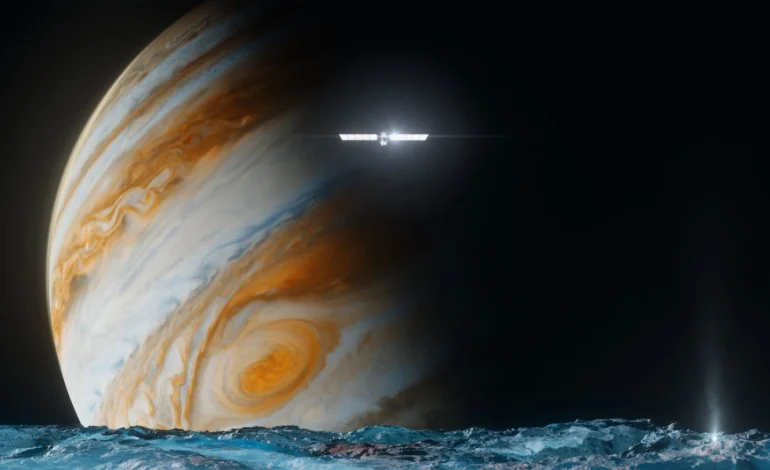Get ready for a groundbreaking space mission as NASA’s Europa Clipper spacecraft prepares for launch this month, setting its sights on Jupiter’s enigmatic moon, Europa. This ambitious venture, set to cost $5.2 billion, will seek to answer one of the most profound questions in our cosmic quest: is there life beyond Earth?
According to a report by The Associated Press, Europa, one of Jupiter’s 95 known moons and nearly the size of our own moon, is considered a prime candidate for harboring life. It’s covered in a thick ice sheet, estimated to be between 10 and 15 miles thick, that scientists believe hides a vast ocean potentially 80 miles deep. Further fueling speculation, observations by the Hubble Space Telescope have detected what appear to be geysers erupting from the surface, suggesting the ocean may be interacting with the moon’s surface.
Europa Clipper, the largest spacecraft ever built by NASA for planetary exploration, is equipped with massive solar panels to power its journey. The spacecraft will take five and a half years to reach Jupiter, then spend years orbiting the gas giant, making 49 close flybys of Europa, getting closer than any previous spacecraft, reaching within 16 miles of the moon’s surface.
While the mission won’t directly search for alien life, its primary objective is to determine whether Europa’s ocean could support life as we know it.
The mission will focus on determining whether the conditions within Europa’s ocean, or possibly in any pockets of water within the ice, could support life. The mission will utilize nine scientific instruments, including radar to peer beneath the ice, cameras to map the entire moon, and tools to analyze the surface and atmosphere.
Europa Clipper is designed to withstand the harsh radiation environment around Jupiter, which is more intense than anywhere else in our solar system besides the sun. The spacecraft’s electronics are protected by a vault with thick walls of aluminum and zinc. While this radiation would kill any life on the surface, it could break down water molecules and release oxygen into the ocean, potentially providing an energy source for any life that might exist there.









